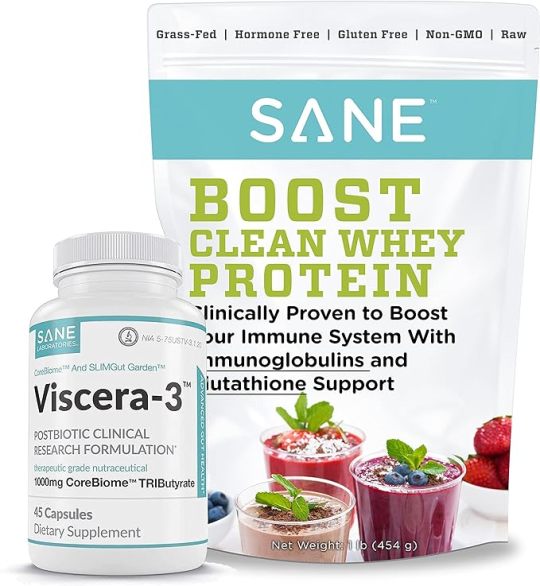#butyric acid
Text
Table 23.1 lists several of the unbranched aliphatic carboxylic acids found in the biological world (e.g. figure 23.1), along with the common names of each.


"Chemistry" 2e - Blackman, A., Bottle, S., Schmid, S., Mocerino, M., Wille, U.
#book quotes#chemistry#nonfiction#textbook#aliphatic#carboxylic acid#70s#1670s#17th century#formica#ants#venom#formic acid#acetic acid#propionic acid#butyric acid#valeric acid#caproic acid#caprylic acid#capric acid#lauric acid#myristic acid#palmitic acid#stearic acid#arachidic acid#methanoic acid#ethanoic acid#propanoic acid#butanoic acid#pentanoic acid
4 notes
·
View notes
Text
By now you might have started to suspect: Cheese is fundamentally about decomposition. Like microbes on a rotten log in the woods, the bacteria and fungi in cheese break down their environment — in this case, the milk fats and proteins. This makes cheeses creamy and gives them flavor.
Mother Noella Marcellino, a longtime Benedictine cheesemaker at the Abbey of Regina Laudis, put it this way in a 2021 interview with Slow Food: “Cheese shows us what goodness can come from decay. Humans don’t want to look at death, because it means separation and the end of a cycle. But it’s also the start of something new. Decomposition creates this wonderful aroma and taste of cheese while evoking a promise of life beyond death.”
Exactly how the microbes build flavor is still being investigated. “It’s much less understood,” says Mayo. But a few things already stand out. Lactic acid bacteria, for example, produce volatile compounds called acetoin and diacetyl that can also be found in butter and accordingly give cheeses a rich, buttery taste. A yeast called Geotrichum candidum brings forth a blend of alcohols, fatty acids and other compounds that impart the moldy yet fruity aroma characteristic of cheeses such as Brie or Camembert. Then there’s butyric acid, which smells rancid on its own but enriches the aroma of Parmesan, and volatile sulfur compounds whose cooked-cabbage smell blends into the flavor profile of many mold-ripened cheeses like Camembert. “Different strains of microbe can produce different taste components,” says Cotter.
All a cheesemaker does is set the right conditions for the “rot” of the milk. “Different bacteria and fungi thrive at different temperatures and different humidity levels, so every step along the way introduces variety and nuance,” says Julia Pringle, a microbiologist at the artisan Vermont cheesemaker Jasper Hill Farm. If a cheesemaker heats the milk to over 120 degrees Fahrenheit, for example, only heat-loving bacteria like Streptococcus thermophilus will survive — perfect for making cheeses like mozzarella.
Cutting the curd into large chunks means that it will retain a fair amount of moisture, which will lead to a softer cheese like Camembert. On the other hand, small cubes of curd drain better, resulting in a drier curd — something you want for, say, a cheddar.
Storing the young cheese at warmer or cooler temperatures will again encourage some microbes and inhibit others, as does the amount of salt that is added. So when cheesemakers wash their ripening rounds with brine, it not only imparts seasoning but also promotes colonies of salt-loving bacteria like B. linens that promptly create a specific kind of rind: “orangey, a bit sticky, and kind of funky,” says Pringle.
Even the tiniest changes in how a cheese is handled can alter its microbiome, and thus the cheese itself, cheesemakers say. Switch on the air exchanger in the ripening room by mistake so that more oxygen flows around the cheese and suddenly molds will sprout that haven’t been there before.
— The Science Behind Your Cheese
#ute eberle#the science behind your cheese#food and drink#science#microbiology#chemistry#genetics#bacteriology#mycology#cheese#curd#geotrichum candidum#butyric acid#streptococcus thermophilus#brevibacterium linens#brie#camembert#parmesan#mozzarella#cheddar cheese
6 notes
·
View notes
Text
Ghee or Butter which is Healthier?
Introduction
Ghee and butter are two popular options when it comes to selecting the correct fat for cooking. Both Ghee and Butter are derived from milk and are commonly used in Indian and Western cuisine respectively.
While Ghee has been utilized in Ayurveda treatment for ages, Butter has been a domestic staple for generations. The dispute over which is healthier has raged on for a long time, and…

View On WordPress
#anti-cancer properties#anti-inflammatory#antioxidants#balanced diet#bone health#butter#butyric acid#conjugated linoleic acid#cooking fats#free radical damage#ghee#health#high smoke point#lactose intolerant#MCTs#Metabolism#Minerals#Nutrition#organic#saturated fat#vitamin K2#Vitamins#Weight loss
0 notes
Text
Consolidated. I used to eat these guys for breakfast, lunch, dinner, and 4th meal.
youtube
If you don't want an abortion, don't get one.
0 notes
Text
my hands still smell faintly of butyric and it’s killing me. or maybe i’m going crazy because it’s been burned into my nose over the past four hours


#rhyn rambles#of course our first chem lab was making smells. i fucking hate smells#i was wearing gloves and have washed my hands plenty so it’s probably not actually on my hands#butyric acid smells like rancid butter and is a component of vomit btw :)#there’s a little bit of it in dairy products and it’s used for flavoring#but yknow it’s pretty putrid when you’re in a room with a bottle of it…
4 notes
·
View notes
Note
i believe at this point it is traditional to ask: chocolate opinion lightning round? white chocolate, fine or heresy? ruby chocolate, innovation or marketing gimmick? milk chocolate, reasonable or a waste of a good bean? dark chocolate, too bitter or a good way to learn the nuances of the cocoa? super dark 100% cocoa chocolate, ridiculous or an even better way to get acquainted with the cocoa? finally, yay or nay on hershey and butyric acid in chocolate
As I've said before: it's disgusting and it should die. I never got to try ruby chocolate, although it doesn't sound appealing. I do like milk chocolate, although dark chocolate is my favourite. 100% cocoa sounds... far too bitter, even for my tastes. I highly doubt anyone actually enjoys that. Hersheys is... fine, I suppose.
...
10 notes
·
View notes
Text

Seeing someone embark on a wild journey
#i actually got curious bc i wanted to know if he used butyric acid when he tried to set Klaus Kinski's house on fire#but according to an interview I found it's his 'revenge weapon of choice'#so that remains a huge maybe.
10 notes
·
View notes
Text
Vegetative propagation technologies using stem and root cuttings of Paulownia tree species for mass production | JBES 2021
Vegetative propagation technologies using stem and root cuttings of Paulownia tree species for mass production | JBES 2021
Mr. Anthony Antwi-Wiredu, Patience Mansa Gakpetor, Reginald Tang Guuroh, Ebenezer Ofori, and Mr. Daniel Aninagyei Ofori, from the Institute of the CSIR-Forestry Research Institute of Ghana, KNUST, Kumasi, Ghana, wrote a research paper about Root cuttings technologies of Paulownia tree species for mass production. Let’s get some knowledge about the rooted cutting of the Paulownia…

View On WordPress
#diversity#Environmental Sciences#Indole-3-butyric acid#Paulownia#Root and stem cuttings#Sprouting and rooting potentials#Vegetative propagation
3 notes
·
View notes
Text
Iso Butyric Acid Prices Trend, Monitor, News, Analytics and Forecast | ChemAnalyst

Iso-butyric Acid Prices: During the Quarter Ending December 2023
North America:
In the fourth quarter of 2023, the Iso-butyric Acid market in North America experienced a decline in prices, primarily due to lackluster trading fundamentals and limited demand for fresh stocks. Oversupply, resulting from higher production rates among major manufacturers, contributed to weak pricing in the region.
Frail market conditions and minimal bidding for new cargoes influenced the price trend. Demand from downstream Pharma and solvent markets was restricted due to low interest from buyers. Additionally, a decline in the adhesive industry led to production cuts among local producers, further decelerating Iso-butyric Acid prices.
By December 2023, the price of Iso-butyric Acid in the USA dropped to USD 1190/ton FOB Houston. The subsequent quarter also witnessed price declines due to delayed offtakes, stemming from sluggish buying attitudes and low trading volume amidst ample product supply. This price drop put pressure on chemical companies, impacting revenue and sales of downstream enterprises.
Get Real Time Prices of Iso-butyric Acid: https://www.chemanalyst.com/Pricing-data/iso-butyric-acid-1408
Asia Pacific:
In the Asia Pacific region, Iso-butyric Acid prices maintained their upward trend in the succeeding months. Compared to the previous quarter, prices ended on a bullish note, driven by increased market purchases. At the quarter's onset, prices rose alongside crude oil prices due to geopolitical tensions between Israel and Palestine, affecting manufacturing costs. Improved demand fundamentals in the region further fueled price increases.
Limited product availability led to elevated prices as regional suppliers increased their offers. However, towards the end of Q4 2023, prices declined due to adequate inventory levels and fading demand from bulk purchasers. In China, Iso-butyric Acid was priced at USD 1508/ton FOB Shanghai in November 2023. Despite abundant supplies, demand in China's marketplaces declined, possibly due to buyer skepticism.
Europe:
The European Iso-butyric Acid market witnessed price declines in Q4 2023, influenced by various factors. Bearish market sentiment, high supply, and subdued year-end requirements contributed to the price drop. Oversupply and weak spot price negotiations further impacted the market negatively.
Low demand from downstream solvent, agriculture intermediate, and dye markets influenced the price trend. With weak support from feedstock Isobutyraldehyde, production costs slumped in the European market. Limited trading activities from downstream enterprises and reluctance to increase prices domestically added to market pressures.
Weak regional demand resulted in satisfactory product reserves on the supply side. Limited trade within Europe intensified pressure on manufacturers, impacting margins and profits.
Get Real Time Prices of Iso-butyric Acid: https://www.chemanalyst.com/Pricing-data/iso-butyric-acid-1408
Contact Us:
ChemAnalyst
GmbH - S-01, 2.floor, Subbelrather Straße,
15a Cologne, 50823, Germany
Call: +49-221-6505-8833
Email: [email protected]
Website: https://www.chemanalyst.com
0 notes
Text
Food Grade Butyric Acid Market trends growth & Analysis
https://www.researchnester.com/reports/food-grade-butyric-acid-market/5577
#Food Grade Butyric Acid Market#Food Grade Butyric Acid Market share.#Food Grade Butyric Acid Market size
0 notes
Text
CLOSTRIDIUM BOOTYLICKUM
0 notes
Text
Viscera-3 POSTbiotics & Clean Whey Protein
SANE Viscera 3 Postbiotics are a type of biotic that helps to prevent excessive gas and bloating. It has triple power than other sodium butyrate supplements. It has no flavor and improves gut health. It also helps to slim your waist.
Clean Whey Protein is a high-quality dietary supplement known for its purity and effectiveness in supporting muscle recovery and overall health. Derived from whey, a protein-rich component of milk, this product undergoes a meticulous filtration process to remove impurities, fats, and lactose, resulting in a clean and highly concentrated protein source.

0 notes
Text
Indole-3-butyric acid manufacturer

Indole-3-butyric acid (IBA) is a plant growth regulator and agrochemical that is used to promote root growth and development. It is a synthetic auxin, a class of plant hormones that play a vital role in many aspects of plant growth and development, including cell division, cell differentiation, and cell elongation.
IBA is unique in that it is more stable and less mobile than other auxins, such as indole-3-acetic acid (IAA). This makes it more effective for promoting root growth, as it remains in the area where it is applied and does not easily translocate to other parts of the plant.
IBA is commonly used to root cuttings, both softwood and hardwood. It is also used to promote root growth on established plants, such as trees and shrubs. IBA can be applied in a variety of ways, including dipping cuttings in a solution of IBA, dusting cuttings with an IBA powder, or watering IBA solution into the soil.
IBA is a safe and effective plant growth regulator that is widely used in agriculture and horticulture. It is a valuable tool for propagating plants, improving root growth, and increasing crop yields.
#indole-3-butyric acid manufacturer#indole-3-butyric acid#plant growth regulator#laboratory chemical#microbiology#iba#agrochemical
0 notes
Text
my body just rejects italian cuisine and it sucks
0 notes
Text
Saudi Arabia Butyric Acid Market Size, Share, Report 2022-2029
BlueWeave Consulting, a leading strategic consulting and market research firm, in its recent study, estimated Saudi Arabia butyric acid market size at USD 11.29 million in 2022. During the forecast period between 2023 and 2029, Saudi Arabia butyric acid market size is projected to grow at an impressive CAGR of 13.38% reaching a value of USD 27.27 million by 2029. An increasing demand for butyric acid from the food and pharmaceutical industries is a major growth driver for Saudi Arabia butyric acid market. The growing demand for meat is boosting the growth of the animal husbandry industry on a regional scale, which is fueling the need for animal feed and driving the rise of the butyric acid market.
Saudi Arabia Butyric Acid Market – Overview
Butyric acid, along with acetic acid and propionic acid, is one of the three most prevalent short-chain fatty acids (SCFAs) in the stomach. Around 90–95% of the SCFAs in the gut, which are created when gut-friendly bacteria break down dietary fiber, are made up of these saturated fatty acids. Butyric acid is used to give buttery overtones to food tastes, and its esters are frequently used as food additives to boost fruit aroma. Butyric acid naturally exists in very small and inconsequential levels for gut health in butter, hard cheeses (like parmesan), milk (particularly goat's and sheep's), yogurts, cream, and some other fermented foods (including sauerkraut, pickled cucumbers, and fermented soy products).
Sample Request @ https://www.blueweaveconsulting.com/report/saudi-arabia-butyric-acid-market/report-sample
Impact of COVID-19 on Saudi Arabia Butyric Acid Market
The expansion of the butyric acid market in Saudi Arabia was negatively impacted by the unprecedented COVID-19 outbreak. The pandemic scenario's lockdown in several countries resulted in supply chain issues, employment reductions, and labor shortages. The pharmaceutical industry was severely harmed by the COVID-19 pandemic. Owing to issues with the unavailability of medications, such as shifts in drug usage habits, the industry's growth was hindered. In the early phases of the outbreak, COVID-19 reduced the availability of treatments in the healthcare sector and hampered the production of pharmaceuticals. As a result, the total demand for butyric acid has significantly decreased as well.
Saudi Arabia Butyric Acid Market – By End Use
Based on end use, Saudi Arabia butyric acid market is segmented into chemical intermediates, animal feed, pharmaceuticals, perfumes, food & flavors, and others. The animal feed segment accounts for the highest share in the Saudi Arabia butyric acid market. Butyric acid is one of the most effective feed additives used in animal nutrition, as it enhances intestinal health and boosts nutrient absorption throughout the gastrointestinal tract. The expanding consumption of including dairy products, eggs, fish, poultry, and others is boosting the growth of the animal farming industry in the country, further boosting the demand for animal feed.
Competitive Landscape
Major players operating in Saudi Arabia butyric acid market include Beijing Huamaoyuan Fragrance Flavor Co., Ltd., Eastman Chemical Company, Merck KGaA, OQ Chemicals GmbH, Perstorp Holding AB, Saudi Kayan Petrochemical Company, and Reza Chemical Industries (RCI). To further enhance their market share, these companies employ various strategies, including mergers and acquisitions, partnerships, joint ventures, license agreements, and new product launches.
Contact Us:
BlueWeave Consulting & Research Pvt. Ltd
+1 866 658 6826 | +1 425 320 4776 | +44 1865 60 0662
0 notes
Text
Butyric Acid Market | Manufacturers, Regions, Type and Application, Forecast by 2029

0 notes